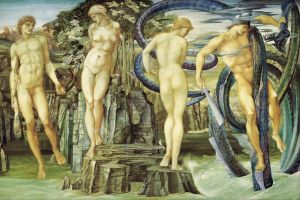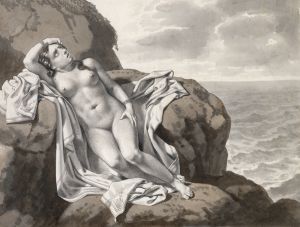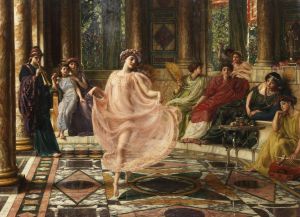
Andromeda
A hand-painted replica of Edward John Poynter’s masterpiece Andromeda, meticulously crafted by professional artists to capture the true essence of the original. Each piece is created with museum-quality canvas and rare mineral pigments, carefully painted by experienced artists with delicate brushstrokes and rich, layered colors to perfectly recreate the texture of the original artwork. Unlike machine-printed reproductions, this hand-painted version brings the painting to life, infused with the artist’s emotions and skill in every stroke. Whether for personal collection or home decoration, it instantly elevates the artistic atmosphere of any space.
Edward John Poynter's painting "Andromeda" is a notable work by the English painter, who was an influential figure in the Victorian art scene. Poynter, born in 1836, was known for his classical themes and meticulous attention to detail, which are evident in this particular piece. "Andromeda" was completed in 1869 and is a fine example of Poynter's ability to blend classical mythology with the aesthetic values of the Victorian era.
The painting depicts the mythological figure Andromeda, a character from Greek mythology. According to the myth, Andromeda was the daughter of Cepheus and Cassiopeia, the king and queen of Aethiopia. Her mother boasted that Andromeda was more beautiful than the Nereids, the sea nymphs, which angered Poseidon, the god of the sea. In retribution, Poseidon sent a sea monster to ravage the coast of Aethiopia. To appease the god and save their kingdom, Andromeda's parents were forced to sacrifice her to the monster by chaining her to a rock by the sea.
Poynter's "Andromeda" captures the moment of her vulnerability and impending doom. The painting shows Andromeda chained to the rock, awaiting her fate. Poynter's attention to anatomical precision and the delicate rendering of Andromeda's form are characteristic of his academic style. The composition is carefully balanced, with Andromeda's figure set against a dramatic seascape, emphasizing her isolation and the peril she faces.
The painting is also notable for its use of light and color. Poynter employs a palette that highlights the contrast between Andromeda's pale skin and the darker, more tumultuous background. This contrast not only draws the viewer's eye to the central figure but also enhances the emotional impact of the scene. The use of light in the painting is particularly effective in conveying the sense of impending danger and the dramatic tension of the narrative.
"Andromeda" reflects Poynter's interest in classical themes and his ability to convey complex narratives through visual art. His work often drew on historical and mythological subjects, which he rendered with a high degree of technical skill and an eye for detail. Poynter's paintings were well-received in his time, and he held several prestigious positions, including the presidency of the Royal Academy.
The painting is part of the collection at the Art Gallery of New South Wales, where it continues to be appreciated for its artistic merit and its representation of Victorian interpretations of classical mythology. Poynter's "Andromeda" remains an important work for its technical execution and its embodiment of the 19th-century fascination with the classical past.


















